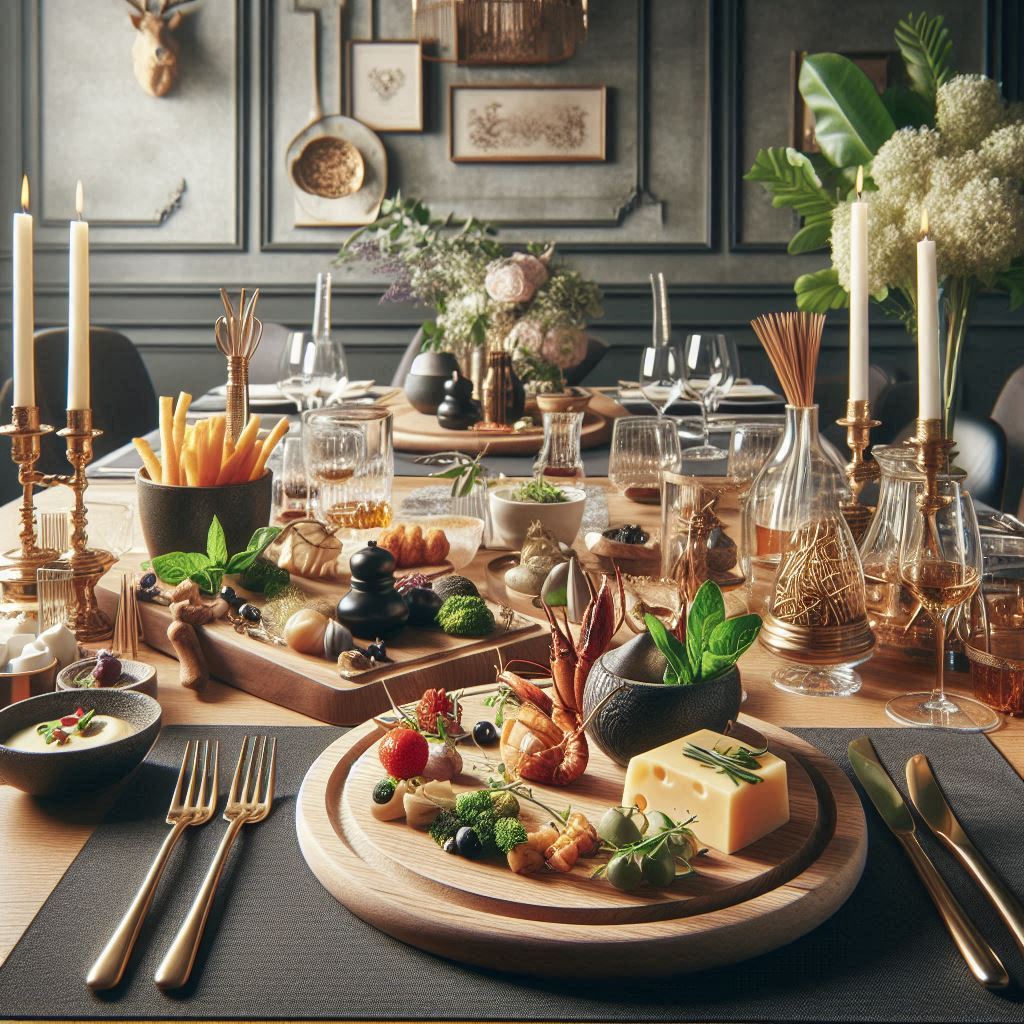
Combining the fine art of cuisine with high-end interior design it’s a strategic move that caters to today’s sophisticated traveler. Culinary hotel design focuses on creating aesthetically pleasing and functional dining spaces. When we talk about well-designed restaurant interiors, it’s not just the tables and chairs but also the ambiance, layout, lighting, and even acoustics that play a role.
Hotels are no longer just places to sleep; they are lifestyle destinations. The incorporation of stylish, luxurious, yet functional designs in restaurants and bars is a must. Imagine a cozy nook with velvet chairs and dim lighting where you can savor a fine wine. Or a spacious open kitchen concept where you can watch chefs create magic on your plates. The thoughtful layout encourages social engagement, making the dining experience enjoyable and memorable.
Lighting can make or break the atmosphere of a dining space. Soft lighting tends to make diners more comfortable and relaxed, whereas too-bright lights can make the experience feel rushed or sterile. Designers often employ a mix of natural and artificial light to create a welcoming and sophisticated atmosphere. And let’s not forget about those stunning chandeliers and pendant lights that add a touch of glamour and class.
Restaurant Interiors: A Feast for the Eyes
Walking into a restaurant should be an experience in itself, something that tickles the senses even before the food arrives.
Colors and textures play an enormous role in setting the mood. Rich, dark woods invoke a sense of warmth and comfort, while cooler tones and sleek metals give a contemporary feel. Plush fabrics and textured walls can make the dining space feel luxurious and inviting.
Some hotels go a step further by integrating artistic elements into their restaurant interiors. Think of eye-catching murals, stunning sculptures, or even indoor gardens. These artistic pieces not only add visual interest but also become conversation starters, enriching the overall dining experience.
Comfortable seating is non-negotiable. But this doesn’t mean compromising on style. Ergonomically designed chairs and tables that reflect the restaurant’s theme can elevate the dining experience.
Dining Spaces
Gone are the days when dining spaces were merely rooms with tables and chairs. Today, they are dynamic environments designed to provide an exceptional gastronomic experience.
More and more hotels are incorporating open kitchen designs into their restaurants, enhancing transparency and engaging diners. This concept allows guests to watch the culinary team in action, adding a layer of entertainment to their meal. Plus, it creates a sense of trust and authenticity.
For those seeking an even more intimate experience, the Chef’s Table is an excellent addition. This setup usually places diners right in the heart of the kitchen, offering an exclusive glimpse into the culinary process. It’s an extraordinary experience that turns a simple meal into a gastronomic journey.
While often overlooked, acoustics are vital in creating a pleasant dining environment. Poor acoustics can make conversations challenging, whereas well-designed spaces manage noise levels effectively. Soft furnishings, acoustic panels, and strategic layout choices can ensure the perfect auditory setting.
Elevating the Gastronomic Experience
Ultimately, what sets culinary hotel design apart is its focus on creating a comprehensive, sensory-rich experience. The goal is to elevate the gastronomic journey from ordinary to extraordinary.
Sustainability and freshness are trends that are here to stay. Many upscale hotels emphasize farm-to-table dining, incorporating locally sourced ingredients. This approach not only ensures the freshness of the dishes served but also allows the design of the space to reflect this philosophy with organic, earthy themes.
Themed dining spaces add a unique twist to the gastronomic experience. Whether it’s a seaside shack-inspired seafood restaurant or a Renaissance-style fine dining hall, themes can transport diners to different worlds, enhancing the overall experience.
No high-end dining experience is complete without a well-crafted cocktail or a fine bottle of wine. Hotels are investing in designing sophisticated bars that not only serve drinks but offer a rich, immersive experience. Think of a sleek, modern bar with artisanal cocktails or a rustic wine cellar offering rare vintages.
Indoor-Outdoor Dining Blends
One trend that’s making waves in the world of culinary hotel design is the seamless integration of indoor and outdoor dining spaces. Many hotels now offer flexible dining areas that can transition from an indoor setting to an alfresco experience effortlessly.
Imagine sipping a cocktail on a rooftop terrace with panoramic city views or enjoying a meal in a lush garden patio. These spaces not only offer breathtaking views but also create a relaxed, open-air atmosphere that significantly enhances the dining experience. Moreover, the integration of greenery and natural elements promotes a sense of tranquility and relaxation.
Poolside dining spaces are another excellent example of indoor-outdoor blending. A chic poolside bar or a luxurious cabana setup can offer guests a unique, memorable dining experience. Ambiance, comfort, and style come together to create a perfect spot for both casual and fine dining.
Embracing the Technology
Incorporating technology into dining spaces is another way hotels are enhancing the culinary experience. Smart solutions offer guests a seamless, personalized experience.
Interactive tables offer a modern twist to the traditional dining experience. These high-tech tables allow guests to browse menus, place orders, and even play games while waiting for their food. Digital menus on tablets offer detailed descriptions, images, and even videos, making the choice more informed and exciting.
Imagine walking into a hotel restaurant where the staff already knows your preferences. Advanced customer management systems allow for personalized dining experiences, tracking guest preferences, allergies, and past orders to provide exceptional service. This makes guests feel valued and enhances their overall experience.
















